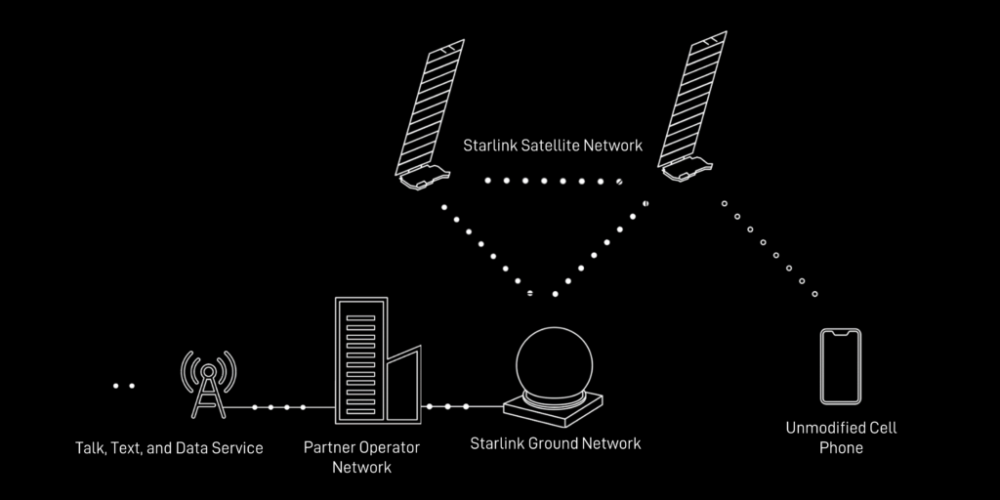SpaceX Has Launched The First Starlink Satellites With Direct-to-Cell Connection To Smartphones
3rd Jan 2024
On 2nd January, SpaceX launched its Falcon 9 rocket on a Starlink satellite mission. Among the 21 Starlink satellites, six included direct-to-cell capabilities.
Starlink satellite mission’s launch details
The launch took place at 7:44 p.m. PST (10:44 p.m. EST, 0344 UTC) from Space Launch Complex 4 East (SLC-4E) at Vandenberg Space Force Base in California.
The Direct-to-Cell feature
According to a statement from SpaceX, the incorporation of the Direct to Cell (DTC) feature will empower mobile network operators globally to offer smooth, worldwide access for texting, calling, and browsing, whether on land, lakes, or coastal waters.
Elon Musk tweeted (exed?) a note to temper expectations regarding DTC performance. The current iteration is not competitive with current land-based systems:
Traditional satellite internet services rely on satellites positioned around 35,786 km above the Earth’s surface, resulting in high latency (data transfer delay) and challenges for activities like streaming, online gaming, video calls, and other data-intensive tasks.
Starlink addresses this issue by deploying a vast satellite constellation at a much closer distance to Earth, approximately 550 km. This proximity significantly reduces latency to around 25 ms, compared to the 600+ ms latency of traditional satellite internet. To achieve global coverage, Starlink has partnered with T-Mobile, a leading U.S. cell service provider. T-Mobile has allocated a portion of its 5G spectrum for Starlink’s second-generation satellites, expanding coverage and enabling T-Mobile phones to access the satellite network.
How “Direct to Cell” works
The SpaceX website explains that the Direct to Cell feature operates with existing LTE (4g) enabled phones as long as the sky is visible. This eliminates the necessity for hardware upgrades or the downloading of special programs. Additionally, it ensures uninterrupted access to text, voice, and data.
The Starlink Direct-to-Cell satellites function as space-based cell towers. Each satellite is equipped with an eNodeB modem, resembling the technology found in conventional ground-based cell towers. This configuration enables Starlink satellites to establish connections with regular, unmodified cell phones on the Earth’s surface, utilizing standard cellular spectrum. Additionally, these satellites can link up with the ground network of the satellite provider, contributing to the support and enhancement of services offered by operator partners.

The Direct to Cell technology will allow sending text messages as early as 2024, and from 2025 it will support voice calls and web browsing.
Within the scope of the project, SpaceX will currently cooperate with T-Mobile, Rogers, KDDI, Optus, One New Zealand, Salt Mobile AG and Entel Chile.
While specific pricing details for the Starlink Direct to Cell package are not available, Starlink currently offers three packages with varying monthly costs and one-time equipment fees. The standard package costs $110 per month with a $599 equipment fee, the RV internet package is $135 per month with a $599 upfront fee, and the business package is priced at $500 per month with a $2,500 equipment fee. Despite initial costs, choosing Starlink can save users from the regular expenses of upgrading modems, routers, and services.






Thank you for your comment! It will be visible on the site after moderation.